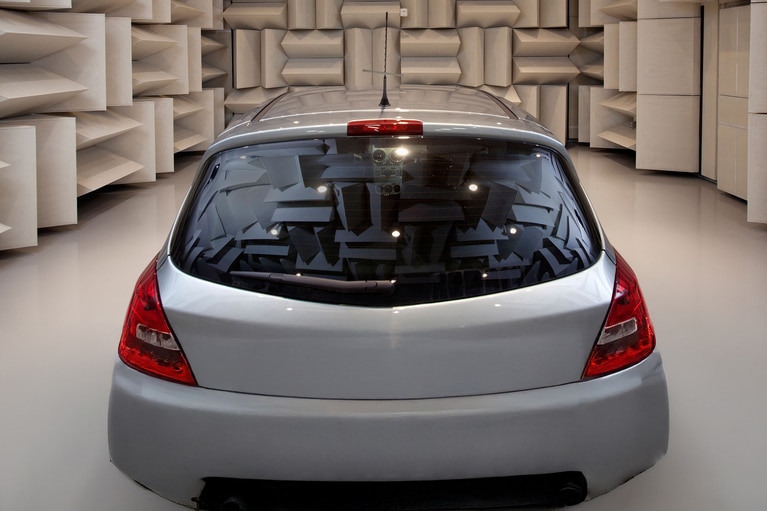
高密度功率模块简化和缩小电动汽车电源系统设计
Vicor 电源模块为电动汽车应用注入创新。了解三款汽车级新产品将如何彻底改变未来的电源设计
Finding an efficient, compact solution to meeting EMI requirements is a greater challenge than ever.
In the USA and Europe, conducted noise emissions are governed by the Class A and Class B limits of both FCC and VDE standards. In the USA, the FCC requires compliance with Class A for equipment operating in factory settings and Class B—the stricter standard—for equipment destined for home use. In Europe, all countries require that equipment for both home and factory use meet the VDE Class B standard.
The FCC and VDE standards are familiar worldwide and the basis for many local standards. Meeting FCC/VDE Class B limits allows equipment to be operated in most settings anywhere.
“Conducted noise” refers to noise currents on the input power lines which are generated by high frequency switching circuits within equipment connected to the lines. These noise currents, which include common-mode and normal-mode noise, flow between the power source and the equipment power supply and find their way back onto the power lines. Common-mode conducted noise current is the unidirectional (in phase) component in each of the two power lines, which generally finds a return path via the third (earth ground) wire. Normal-mode conducted noise current is the component of current which is opposite in direction or phase in the two power lines.
Conducted noise measurements may be made using either a receiver or a spectrum analyzer in conjunction with related equipment to obtain sufficient sensitivity and overload protection to ensure accurate, repeatable measurements of all emissions over the frequency range of 100kHz to 30MHz. Both the equipment under test (EUT) and the receiver or analyzer are connected to the power source through a line impedance stabilization network (LISN).
The LISN provides power line frequency (50 – 60Hz) coupling between the EUT and the power source, while ensuring a high degree of isolation over the spectral measurement range. The receiver or analyzer provides a 50 ohm termination to the LISN measurement port. This guarantees a fixed or calibrated relationship between conducted EMI current and the resulting voltage at the input of the measurement apparatus.
Related content
Webinar: EMI characterization and filtering
高密度功率模块简化和缩小电动汽车电源系统设计
Vicor 电源模块为电动汽车应用注入创新。了解三款汽车级新产品将如何彻底改变未来的电源设计
高密度电源模块推动主动悬架技术日趋成熟
主动悬挂系统已从 20 世纪 90 年代的测试版发展成为今天的 48V 驱动系统。了解电源模块对电源系统设计的影响
基于 MHz 开关频率的器件助力实现 DC-DC 转换器和 EMI 滤波器的小型化
想象一下,使用 DC-DC 转换器解决方案来利用高频开关的优势,而不会发生传统解決方案的缺点
采用 48V 区域架构,打造面向未来的先进电动汽车
随着原始设备制造商(OEM)采用 48V 电源架构,他们正努力优化其电源系统设计。Vicor 的高功率密度模块可为 48V 区域架构提供峰值效率



